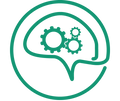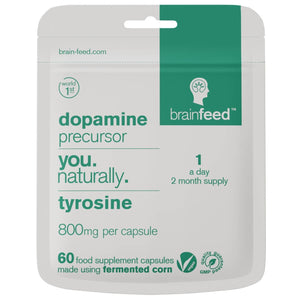How to make good decisions: the science of decision-making
filter
The human brain is a complex organ, responsible for a myriad of functions, including making choices. Every day, we are faced with countless decisions, from simple ones like what to wear or eat, to more complex decisions like career choices or financial investments—ever wondered how you make these choices? Here’s a closer look into the decision-making processes which will help you get better at choosing with ease.
The science of decision-making
Choice-making is a complex process that involves various cognitive and psychological elements. It is a fundamental aspect of human behaviour and is integral to your daily lives. From a psychological perspective, decision-making is regarded as the cognitive process resulting in the selection of a belief or a course of action among several possible alternative options[1 Trusted Source 2015 - Current Opinion in Behavioral Sciences Research evaluation The neuroscience of consumer choice ] . It could be either rational or irrational and is based on assumptions of values, preferences, and beliefs of the decision-maker[1 Trusted Source 2015 - Current Opinion in Behavioral Sciences Research evaluation The neuroscience of consumer choice ] . Rational decision-making is a multi-step process for making choices between alternatives that favour logic, objectivity, and analysis over subjectivity and insight[1 Trusted Source 2015 - Current Opinion in Behavioral Sciences Research evaluation The neuroscience of consumer choice ] . Imagine doing a pros and cons list to help you decide. That’s a rational decision-making process. On the other hand, irrational decision-making is more counter-logic, where decisions are made in haste and outcomes are poorly considered[1 Trusted Source 2015 - Current Opinion in Behavioral Sciences Research evaluation The neuroscience of consumer choice ] . During irrational decision-making, you make a choice more intuitively rather than sitting down and having a good long think about it. Various decision-making models provide a structured approach to making choices. These include rational models, recognition-primed models, and creative models[2 Trusted Source 2020 - The University of New Mexico Newsroom 3rd-party source Explore or exploit: How our brain makes choices ] . Before we look further into the best process for making a choice, let’s talk about the brain’s role in it.
The brain and decision-making
Several brain areas are involved in the process of decision-making. Part of brain that is right above your eyes is involved in working towards your goals[3 Trusted Source 2020 - Nature Research evaluation Values encoded in orbitofrontal cortex are causally related to economic choices ] . It also holds information about how you value a certain choice[3 Trusted Source 2020 - Nature Research evaluation Values encoded in orbitofrontal cortex are causally related to economic choices ] . The area right at the top of your forehead gets activated more when an unfamiliar choice is made[1 Trusted Source 2015 - Current Opinion in Behavioral Sciences Research evaluation The neuroscience of consumer choice ] , [4 Trusted Source 2007 - The Journal of Neuroscience Systematic and meta-analysis The Neural Basis of Choice and Decision Making ] . The brain’s emotional centre called the amygdala and the part of the brain right below your eyes, show increased activation while you weigh the value of new possible experiences[1 Trusted Source 2015 - Current Opinion in Behavioral Sciences Research evaluation The neuroscience of consumer choice ] , [4 Trusted Source 2007 - The Journal of Neuroscience Systematic and meta-analysis The Neural Basis of Choice and Decision Making ] . Every part of the brain is made of fundamental brain cells called neurons that send commands around our brain and body[4 Trusted Source 2007 - The Journal of Neuroscience Systematic and meta-analysis The Neural Basis of Choice and Decision Making ] . Neurons in these parts of the brain communicate with each other to help you make a decision[4 Trusted Source 2007 - The Journal of Neuroscience Systematic and meta-analysis The Neural Basis of Choice and Decision Making ] . For example, neurons in the part of the brain below your eyes encode the value of the options and determine the final decision[3 Trusted Source 2020 - Nature Research evaluation Values encoded in orbitofrontal cortex are causally related to economic choices ] . And what guides the neurons? The pleasure and reward chemical dopamine has a crucial role in choice-making. Because it’s released by the brain’s circuit for reward, dopamine helps motivate the choice of your next action[5 Trusted Source 2019 - Neuroscience News 3rd-party source How the Brain Makes Choices ] . For dopamine to work its magic, you need to make sure you’re body can produce enough of it and later release it. Make sure you get enough of dopamine’s building block tyrosine through your protein-rich diet like eggs and nuts or opt for high-quality supplements[6 Trusted Source 2019 - Psychological Research Human study Food for thought: association between dietary tyrosine and cognitive performance in younger and older adults ] , [7 Trusted Source MyFoodData 3rd-party source Foods highest in Tyrosine ] . brain feed has created the world’s first natural 800mg tyrosine capsule from fermented corn, providing a high-strength dopamine boost in a single capsule. For 15% off, new customers can use the code ‘NEW15’ at checkout.
How to make good decisions?
In short, list all scenarios, think about the pros and cons, and listen to your heart. For a better understanding, let’s break that down a little bit. Here are 7 steps that help you make choices with ease:
1. Identifying a decision
Let’s imagine you’re offered another job. At first, you realise you need to make a decision.
2. Gathering information
To be able to do that, you need to gather more information about the job. You want to know what exactly is gonna be your role, how many hours per week are you going to be working, what’s the salary, and if you can read out the whole contract before making a choice[1 Trusted Source 2015 - Current Opinion in Behavioral Sciences Research evaluation The neuroscience of consumer choice ] .
3. Assessing alternative resolutions
At first, it seems like there are only two options - to stay at the old job or take a new one. However, the more you think about it, the more you realise there are loads of alternatives, like staying at the old job where you start to feel better or doing the same while nothing ever changes. Or taking the new job that will start to stress you out. Or maybe you’ll get along with coworkers better in the new one. These alternative scenarios can help you come to a conclusion[2 Trusted Source 2020 - The University of New Mexico Newsroom 3rd-party source Explore or exploit: How our brain makes choices ] .
4. Weighing the evidence
Now comes the weighing of the choices - should you stick with the old job or take the new alternative? Write a pros and cons list which will give you an insight into how well certain options connect with your values[3 Trusted Source 2020 - Nature Research evaluation Values encoded in orbitofrontal cortex are causally related to economic choices ] .
5. Choosing among alternatives
Comparing the perks of the two jobs will help you choose one and make a decision. It’s also important to listen to your intuition - do you still feel good about making a decision or did the cons you change your mind?
6. Taking action
It’s time to tell the managers your decision.
7. Reviewing the decision and its consequences[8 Trusted Source 2022 - Current Biology Human study Implicit mechanisms of intention ]
After staying at the old job or starting a new one, you’ll be revisiting your choices while also experiencing them in that moment. For example, if the manager from the old job is yet to listen to your pitch even though he promised he would, you’d likely feel remorseful for staying at the old job.
Benefits of making a choice
Although decision-making is a long process that can sometimes seem a little scary at first, choice-making is essential for your life. Healthy decision-making that considers your feelings and values, shapes your knowledge and perceptions of the world around you[1 Trusted Source 2015 - Current Opinion in Behavioral Sciences Research evaluation The neuroscience of consumer choice ] . It allows you to explore new options and experiences, contributing to your personal growth and adaptability, especially when you deem a decision as a good one[9 Trusted Source 2000 - American Psychologist Research evaluation Making a good decision: Value from fit. ] . Evolutionary, it’s one of the most important mechanisms as it dictates the chance of survival[10 Trusted Source 2012 - Cambridge University Press 3rd-party source The evolved foundations of decision making. ] .
Psychology of decision-making: the illusion of control
While choice is generally beneficial, older research suggests it can sometimes create an illusion of control[11 Trusted Source 2021 - Psychological Science Research evaluation Does Choice Cause an Illusion of Control? ] . One example of this is when people feel like they’re in control of the win when buying the lottery tickets even though there’s an identical chance of winning the lottery with each lottery ticket. However, an extensive literature review concluded that choice rarely makes people feel more likely to achieve preferable outcomes[11 Trusted Source 2021 - Psychological Science Research evaluation Does Choice Cause an Illusion of Control? ] . Even when it seems like it does, in reality, the literature review showed that people already had preexisting beliefs about the two options being different even though they were identical which imitated the feeling of having control.
The neuroscience of choice is a fascinating field, even if the act of making a choice is far from simple. It is an essential part of our lives that can become more fun once you master the steps behind it.
References
[1] Hsu, M., & Yoon, C. (2015). The neuroscience of consumer choice. Current Opinion in Behavioral Sciences, 5, 116–121. https://www.sciencedirect.com/science/article/abs/pii/S2352154615001217?via%3Dihub
[2] Rogers, N. (2020). Explore or exploit: How our brain makes choices. The University of New Mexico Newsroom. https://news.unm.edu/news/explore-or-exploit-how-our-brain-makes-choices
[3] Ballesta, S., Shi, W., Conen, K. E., & Padoa-Schioppa, C. (2020). Values encoded in orbitofrontal cortex are causally related to economic choices. Nature, 588(7838), 450–453. https://www.nature.com/articles/s41586-020-2880-x
[4] Balleine, B. W. (2007). The Neural Basis of Choice and Decision Making. The Journal of Neuroscience, 27(31), 8159–8160. https://www.jneurosci.org/content/27/31/8159
[5] How the Brain Makes Choices (2019). Neuroscience News. https://neurosciencenews.com/brain-choices-11504/
[6]Kühn, S., Düzel, S., Colzato, L., Norman, K., Gallinat, J., Brandmaier, A. M., Lindenberger, U., & Widaman, K. F. (2019). Food for thought: Association between dietary tyrosine and cognitive performance in younger and older adults. Psychological Research, 83(6), 1097–1106. https://link.springer.com/article/10.1007/s00426-017-0957-4
[7] Foods highest in Tyrosine (n.d.). MyFoodData. https://tools.myfooddata.com/nutrient-ranking-tool/tyrosine/all/highest/grams/common/no
[8] Aflalo, T., Zhang, C., Revechkis, B., Rosario, E., Pouratian, N., & Andersen, R. A. (2022). Implicit mechanisms of intention. Current Biology, 32(9), 2051-2060.e6. https://www.cell.com/current-biology/fulltext/S0960-9822(22)00442-0?_returnURL=https%3A%2F%2Flinkinghub.elsevier.com%2Fretrieve%2Fpii%2FS0960982222004420%3Fshowall%3Dtrue
[9] Higgins, E. T. (2000). Making a good decision: Value from fit. American Psychologist, 55(11), 1217–1230. https://psycnet.apa.org/doiLanding?doi=10.1037%2F0003-066X.55.11.1217
[10] Wilke, A., & Todd, P. M. (2012). The evolved foundations of decision making. In M. K. Dhami, A. Schlottmann, & M. R. Waldmann (Eds.), Judgment and Decision Making as a Skill: Learning, Development and Evolution (pp: 3–27). Cambridge University Press. https://psycnet.apa.org/record/2012-08875-001
[11] Klusowski, J., Small, D. A., & Simmons, J. P. (2021). Does Choice Cause an Illusion of Control? Psychological Science, 32(2), 159–172. https://journals.sagepub.com/doi/10.1177/0956797620958009


 alertness
alertness
 cognition
cognition
 sleep
sleep
 wellbeing
wellbeing


Leave a comment
Open tab